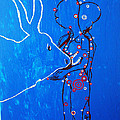Looking for design inspiration? Browse our curated collections!
Joined
2009
Followers
380
Visitors
1,487,998

Dinka Livelihood - South Sudan
The name Dinka – applied to both the language and its speakers - means “people.†Like the Nuer and the Masai, the Dinka are largely pastoral. They migrate regularly in response to the seasons and their agro-pastoral needs. Livestock, especially cattle, play a central role in Dinka culture and worldview. Traditionally, boys tend goats and sheep, while older men are responsible for the cattle. Though the Dinka groups retain the traditional pastoral life of Nilotes, they have added crop cultivation in some areas; growing peanuts, beans, and corn (maize). Women do much of the farming; men clear forests for cultivation sites. There are usually two plantings per year, a cultural practice that incorporates strategies for dealing with the annual cycle of one long dry season and one long rainy season. The Dinka society is largely egalitarian. All people, wealthy or poor, are expected to contribute to the common good. Primary forms of Dinka art are expressed in the form of poetry and song, through which Dinka history and social identity are taught and preserved. The Dinka sing praise songs to their ancestors and the living. Certain songs are reserved for specific occasions like festivals, field work, and initiation ceremonies. Besides poetry and song, men and women contribute artistically in different ways.Women make pots and weave baskets and some men are blacksmiths, producing various implements for the community. Traditional homes are made of mud walls with thatched conical roofs, which might last about 20 years. The homesteads are situated to enable year-round access to grass and water. Today, permanent villages are built on higher ground above the flood plane of the Nile. The women and older men tend crops on this high ground while younger men move up and down according to the rise and fall of the river.